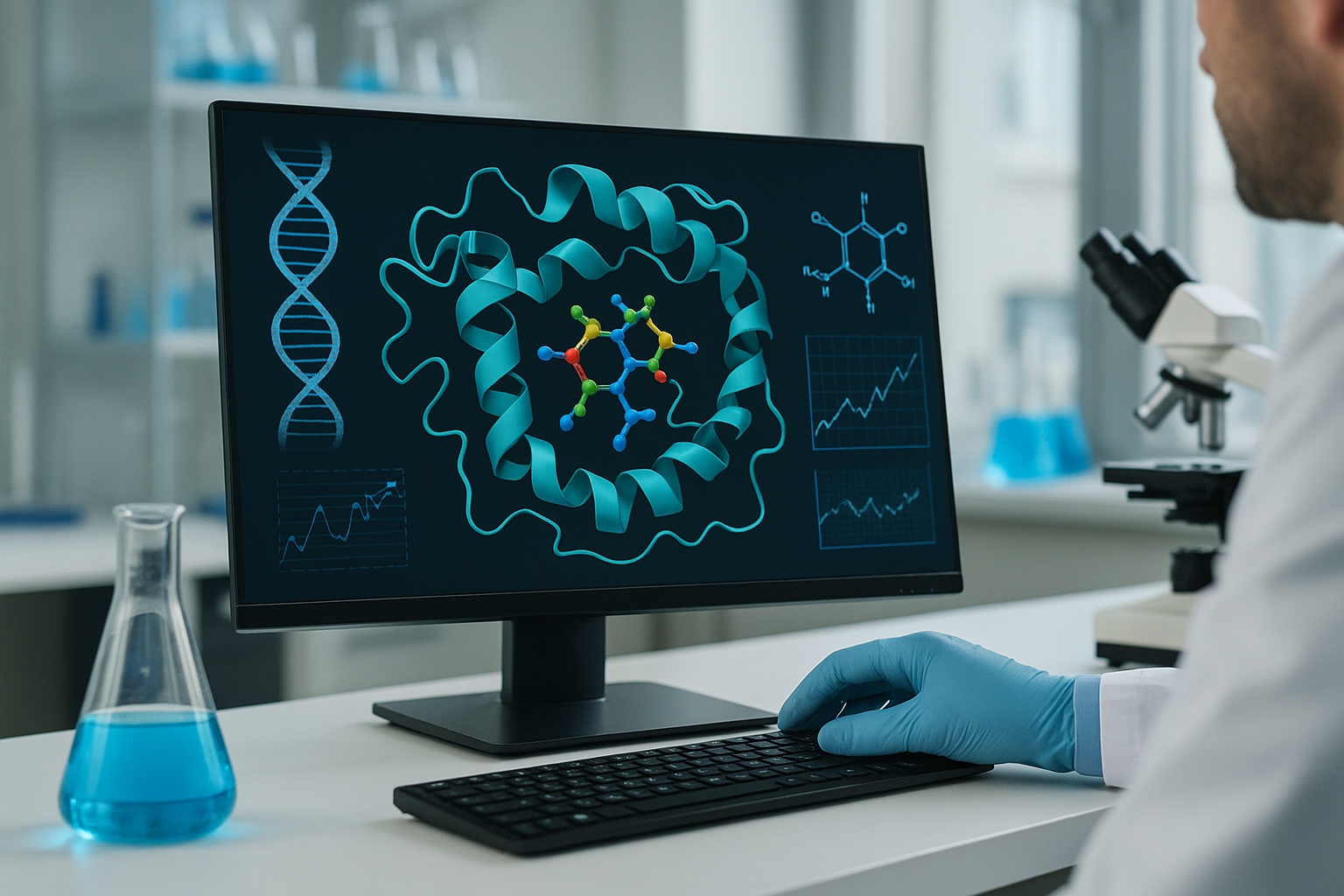How AI is driving the next frontier in drug innovation?
Drug discovery has long been criticized for its slow, costly, and failure-prone nature. Traditional approaches, particularly structure-based virtual screening (SBVS) and ligand-based virtual screening (LBVS), require years of experimental cycles, often with limited chemical diversity and poor hit rates. This study outlines how the incorporation of machine learning and deep learning algorithms has addressed many of these constraints.

The global pharmaceutical industry may be on the verge of a radical transformation, thanks to the growing integration of artificial intelligence in drug design. A new review provides a detailed look into how AI technologies are changing the game in small-molecule drug discovery. The study, titled “Digital Alchemy: The Rise of Machine and Deep Learning in Small-Molecule Drug Discovery” and published in the International Journal of Molecular Sciences, highlights the progress, potential, and persistent challenges of adopting intelligent computational tools in the biopharma pipeline.
The review details how AI is dismantling traditional bottlenecks, dramatically shortening timelines, and improving success rates in the drug development process. The review also lays out a future roadmap for overcoming hurdles in data quality, interpretability, and ethical deployment, marking a significant milestone in the era of digital pharmaceuticals.
How have AI and machine learning reconfigured traditional drug discovery?
Drug discovery has long been criticized for its slow, costly, and failure-prone nature. Traditional approaches, particularly structure-based virtual screening (SBVS) and ligand-based virtual screening (LBVS), require years of experimental cycles, often with limited chemical diversity and poor hit rates. This study outlines how the incorporation of machine learning and deep learning algorithms has addressed many of these constraints.
Specifically, AI algorithms now enable high-throughput virtual screening, automating the search through vast chemical spaces and identifying promising molecular candidates at speeds unthinkable a decade ago. Neural networks have been deployed to predict ligand binding affinities, allowing researchers to prioritize compounds with higher chances of efficacy. Reinforcement learning frameworks are being used to navigate complex drug-likeness and pharmacokinetics landscapes, optimizing molecular structures in silico before any physical synthesis is attempted.
Graph neural networks (GNNs), in particular, offer a dynamic way to model molecular structures, capturing atomic interactions in a data-rich, contextualized format that mirrors real biochemical behavior. These tools have enhanced the predictive power of computational models, especially in areas like protein–ligand interaction modeling and flexible docking scenarios where traditional algorithms fall short.
The authors illustrate how AI integration has already yielded measurable results. Case studies from both academic labs and industrial R&D show improved hit-to-lead ratios, shortened timelines, and more nuanced predictions of pharmacological outcomes. These advancements not only reduce costs but also create opportunities to pursue previously infeasible targets in oncology, neurology, and rare diseases.
What are the remaining barriers to full-scale AI integration in pharma?
Despite the progress, the study emphasizes that AI in drug discovery is still maturing. One of the foremost issues is data quality. Drug discovery relies on access to large, diverse, and well-annotated datasets, conditions that are not consistently met across pharmaceutical repositories. The lack of standardized data curation and interoperability among data sources introduces bias and restricts generalization of AI models.
Another key obstacle is model interpretability. While deep learning models are adept at making accurate predictions, they often function as “black boxes,” offering little insight into why a decision was made. This lack of transparency is especially problematic in pharmaceutical contexts, where regulatory approval and clinical decisions require rigorous validation. To build trust, explainable AI (XAI) techniques must be refined to deliver interpretable insights without compromising performance.
Integration with wet-lab operations remains a practical barrier. Although AI can streamline early-stage research, its output still depends on validation through in vitro and in vivo experiments. Bridging this digital-physical gap requires robust interfaces between computational models and experimental protocols, which are often siloed within different research teams or institutions.
Additionally, the study notes the ethical and regulatory dimensions of deploying AI in drug development. With increasing automation of decision-making in health sciences, questions around accountability, data privacy, and algorithmic bias take on heightened significance. The researchers advocate for proactive regulatory engagement and the development of ethical guidelines that ensure the responsible use of AI in healthcare innovation.
What is the road ahead for AI-driven drug discovery?
The study identifies several strategies that can accelerate and stabilize the use of AI in pharmaceutical R&D. Foremost is the call for hybrid models that combine expert systems, mechanistic knowledge, and data-driven algorithms. These models would capitalize on human insights while leveraging the computational strengths of AI, making them particularly valuable in therapeutic domains with sparse or noisy data.
Open-access data ecosystems are also vital. The authors suggest that government agencies, academic institutions, and industry stakeholders collaborate on shared databases that uphold data quality, traceability, and reproducibility. Such frameworks would help reduce redundancy, standardize protocols, and enhance model transferability across different drug discovery programs.
Investment in cross-disciplinary education and workforce development is another priority. Equipping pharmacologists, chemists, and biologists with AI literacy, and vice versa, is crucial for fostering seamless integration across research environments. Without these human bridges, the full potential of AI tools will remain underutilized.
Lastly, the study encourages greater adoption of real-time feedback systems that allow AI models to learn dynamically from experimental outcomes. These adaptive systems would continuously improve predictions based on actual results, creating a virtuous cycle between machine learning and laboratory validation.
- FIRST PUBLISHED IN:
- Devdiscourse










